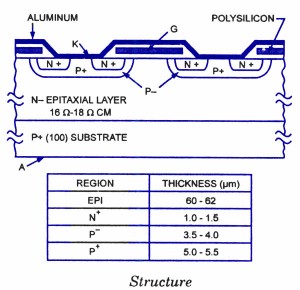How to protect IGBT from failures and breakdowns ?
Insulated Gate Bipolar Transistors are susceptible to gate insulation damage by the electrostatic discharge of energy through the devices. When handling these devices, care should be exercised to assure that the static charge built in the handler’s body capacitance is not discharged through the device. With proper handling and application procedures, however, IGBTs are currently being extensively used in production by numerous equipment manufacturers in military, industrial and consumer applications, with virtually no damage problems due to electrostatic discharge.
IGBTs can be handled safely if the following basic precautions are taken:
Handling Precautions For IGBTs.
1. Prior to assembly into a circuit, all leads should be kept shorted together either by the use of metal shorting springs or by the insertion into conductive material such as “ECCOSORBD™ LD26” or equivalent.
2. When devices are removed by hand from their carriers, the hand being used should be grounded by any suitable means, for example, with a metallic wristband.
3. Tips of soldering irons should be grounded.
4. Devices should never be inserted into or removed from circuits with power.
5. Gate Voltage Rating. Never exceed the gate-voltage rating of VGEM. Exceeding the rated VGE can result in permanent damage to the oxide layer in the gi region.
6. Gate Termination. The gates of these devices are essentially capacitors. Circuits that leave the gate open-circuited or floating should be avoided. These conditions can result in turn-on of the device due to voltage buildup on the input capacitor due to leakage currents or pickup.
7. Gate Protection. These devices do not have an internal monolithic Zener Diode from gate to emitter.If gate protection is required an external Zener is recommended. ECCOSORBD™ is a Trademark of Emerson and Cumming, Inc.
3. Tips of soldering irons should be grounded.
4. Devices should never be inserted into or removed from circuits with power 01
5. Gate Voltage Rating. Never exceed the gate-voltage rating of VGEM. Exceeding the rated VGE can result in permanent damage to the oxide layer in the gi region.
6. Gate Termination. The gates of these devices are essentially capacitors. Circuits that leave the gate open-circuited or floating should be avoided. These conditions can result in turn-on of the device due to voltage buildup on the input capacitor due to leakage currents or pickup.
7. Gate Protection. These devices do
not have an internal monolithic
Zener Diode from gate to emitter.
If gate protection is required an external Zener is recommended. ECCOSORBD™ is a Trademark of Emerson and Cumming, Inc.


Comments are closed.